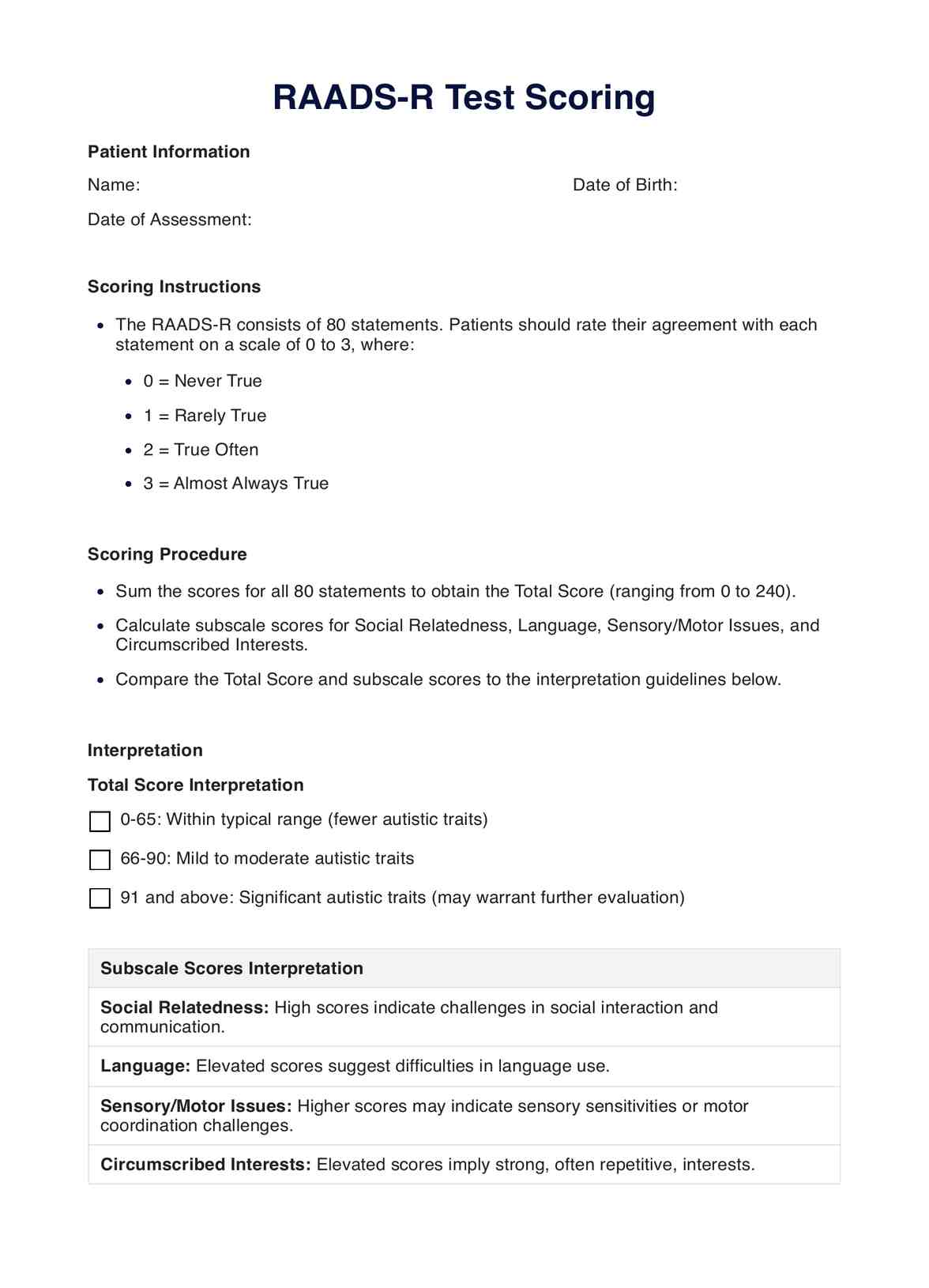Individuals themselves or healthcare professionals can score a RAADS-R.

RAADS-R Test Scoring
Obtain accurate RAADS-R Test Scoring results to effectively assess autistic traits and behaviors, aiding in diagnosis and personalized interventions.
Use Template
RAADS-R Test Scoring Template
Commonly asked questions
A RAADS-R is typically scored after an individual completes the self-report questionnaire, which assesses autistic traits and behaviors.
RAADS-R Test Scorings are used to evaluate the presence and severity of autistic traits in adults for diagnostic, research, and intervention purposes.
EHR and practice management software
Get started for free
*No credit card required
Free
$0/usd
Unlimited clients
Telehealth
1GB of storage
Client portal text
Automated billing and online payments











